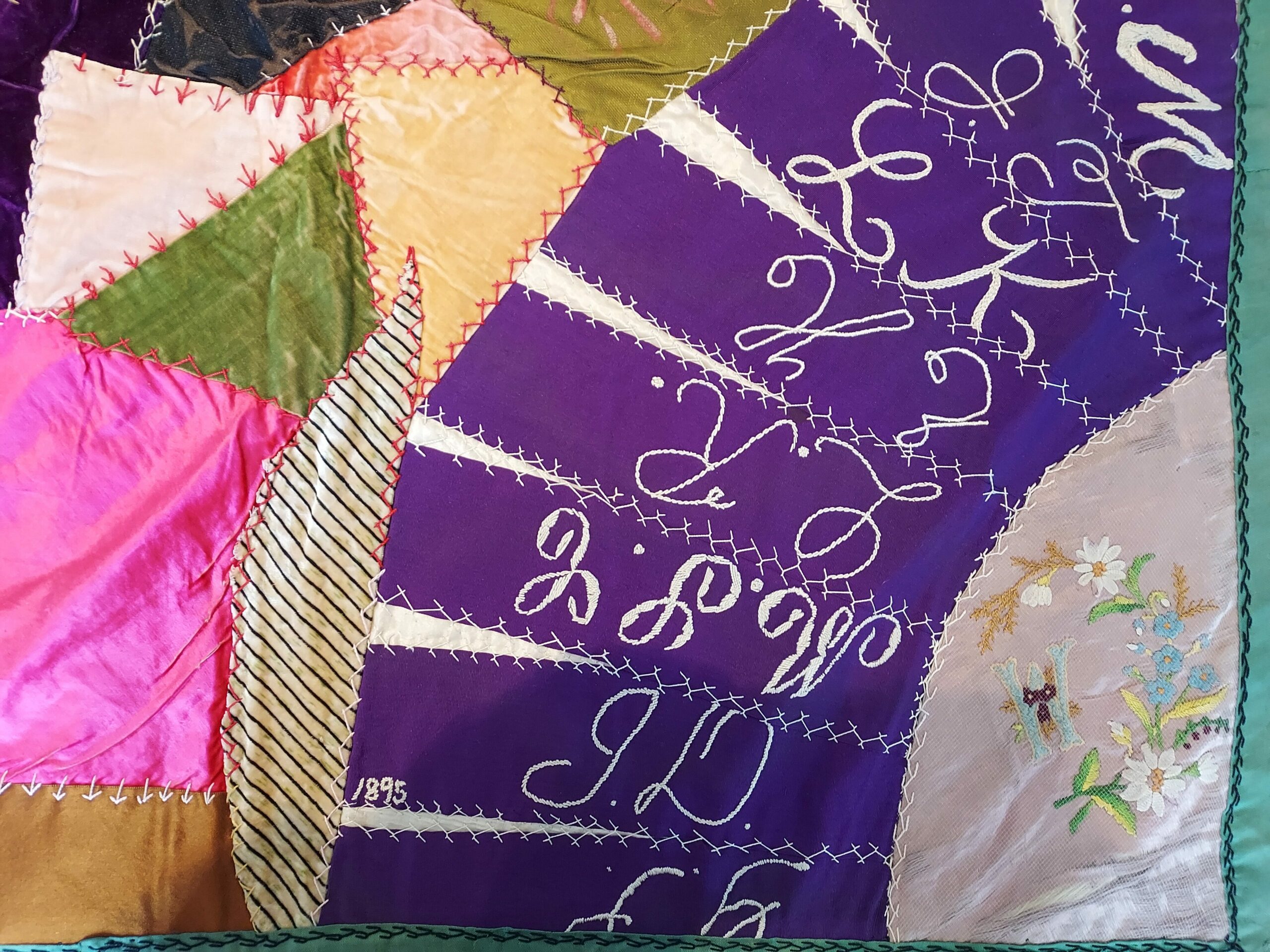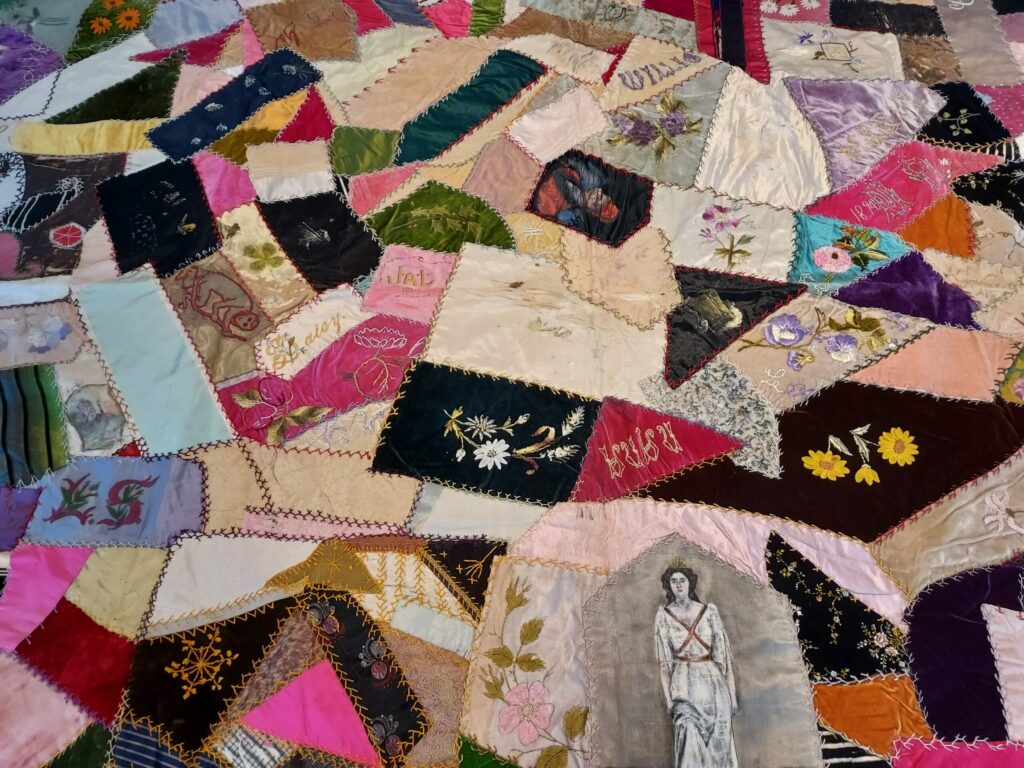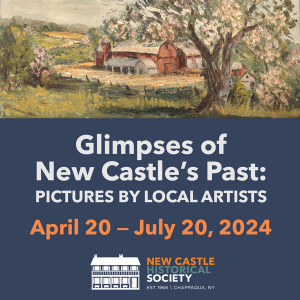In the fall of 2020, the New Castle Historical Society received a donation of a family quilt from Dorinda Dodge. The quilt was made between 1894 – 1895 and most likely had multiple individuals add their creative touch. The conservation of the quilt by the Textile Conservation Workshop in South Salem was made possible by Betsy Towl and contributions made in Memory of Toni Hutin. The quilt will be on display at the Horace Greeley House thru the summer.
Known as a “crazy quilt” this was a popular style in the mid-late 19th century. According to Cindy Brick:
“Crazy quilt really seems to have sprung from a combination of factors begun by the Industrial Revolution. By 1850, American companies were manufacturing good-quality fabrics that were colorfast more often than not. (Consistently colorfast fabrics were not generally available until later in the 19th century, when washday blues, mourning blacks and Turkey reds appeared.) Fabric prices moderated. Thanks to higher-paying factory jobs, women could actually afford to buy cloth, instead of going to the trouble of weaving it – an option they often took in the 18th and early 19th centuries. Also, sewing machines, which had been used by commercial sewers for years, became increasingly affordable for the average family, thanks to the advent of the “layaway plan.” Family sewing was accomplished more quickly, giving the average woman time for more genteel pursuits, like embroidery and lacemaking”.
“The Civil War changed all that. Fabrics, if they were available at all, skyrocketed in price – especially for the South, which had few factories of any kind. Women’s extra energy went toward their families, instead of fancywork. Exhibitions, called sanitary fairs, became a popular way of showing off one’s skills, as well as collecting quilts, shirts and funds for soldiers. It is from this period, at a Sanitary Fair in Cleveland, Ohio, that the first published mention of Crazy quilts appears”.






